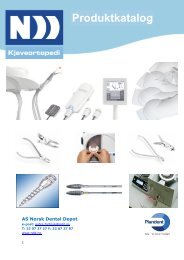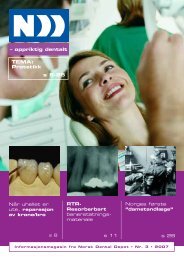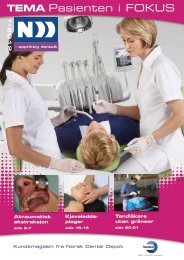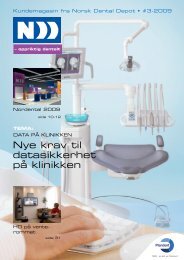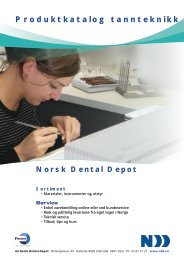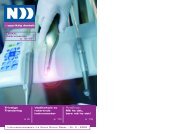Biodentine
Biodentine
Biodentine
You also want an ePaper? Increase the reach of your titles
YUMPU automatically turns print PDFs into web optimized ePapers that Google loves.
24<br />
❺ Evidence<br />
based bioactivity<br />
Two in vitro tests and two tests in animals were performed in order to demonstrate the<br />
bioactivity of <strong>Biodentine</strong> in clinical situations.<br />
5.1 - In vitro test of direct pulp capping on human<br />
extracted teeth<br />
Human teeth were extracted in order to make exposed pulp cavities which were then<br />
filled with <strong>Biodentine</strong> (About, 2007). The teeth (n = 15) were cultured for 24 hours<br />
(n = 5), 14 days (n = 5) and 28 days (n = 5) in order to determine the bioactivity of<br />
<strong>Biodentine</strong> (Fig 9).<br />
A<br />
B C<br />
Figure 9. Exposed pulp cavities (A) obturated with <strong>Biodentine</strong> (B) and cultured (C).<br />
At the end of the culture and after demineralisation, histological sections were done. The<br />
results showed good preservation of the pulp up to 28 days. Near the capped area, a<br />
change in the pulp tissue was reported, with the neo-formation of reparatory dentine<br />
comparable to that observed with MTA (Fig 10). This corresponds to the first signs of<br />
the formation of a dentine bridge.<br />
Figure 10. Observations after 28 days.<br />
To conclude, <strong>Biodentine</strong> is able to stimulate initiation and development of mineralization.



